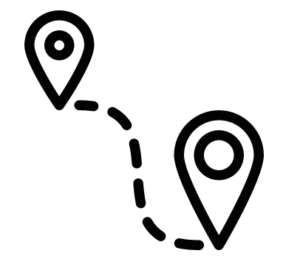20.5: Pronouns
- Page ID
- 5702
A pronoun stands in the place of a noun. Like nouns, pronouns can serve as the subject or object of a sentence: they are the things sentences are about. Pronouns include words like he, she, and I, but they also include words like this, that, which, who, anybody, and everyone. Before we get into the different types of pronouns, let’s look at how they work in sentences.
Because a pronoun is replacing a noun, its meaning is dependent on the noun that it is replacing. This noun is called the antecedent. Let’s look at the first sentence of this paragraph again:
Because a pronoun is replacing a noun, its meaning is dependent on the noun that it is replacing.
There are two pronouns here: its and it. Its and it both have the same antecedent: “a pronoun.” Whenever you use a pronoun, you must also include its antecedent. Without the antecedent, your readers (or listeners) won’t be able to figure out what the pronoun is referring to. Let’s look at a couple of examples:
- Jason likes it when people look to him for leadership.
- Trini does her hair and make up every day—with no exceptions.
- Billy often has to clean his glasses.
- Kimberly is a gymnast. She has earned several medals in different competitions.
So, what are the antecedents and pronouns in these sentences?
- Jason is the antecedent for the pronoun him.
- Trini is the antecedent for the pronoun her.
- Billy is the antecedent for the pronoun his.
- Kimberly is the antecedent for the pronoun she.
Exercise \(\PageIndex{1}\)
Identify the antecedents and pronouns in the following examples:
- Itzel and Camila were the top ranking doubles team at OSU. They hadn’t been defeated all year.
- People asked Jorge to review their papers so often that he started a small editing business.
- Henry called his parents every week.
- Answer
-
- Itzel and Camila is the antecedent for the pronoun They. There are two pronoun/antecedent pairs in this sentence.
- People is the antecedent for their, and Jorge is the antecedent for he.
- Henry is the antecedent for his.
So far, we’ve only looked at personal pronouns, but there are a lot of other types, including demonstrative, and indefinite pronouns. Let’s discuss each of these types in further depth:
Personal Pronouns

Figure \(\PageIndex{1}\)
The following sentences give examples of personal pronouns used with antecedents:
- That poor man looks as if he needs a new coat. (the noun phrase that poor man is the antecedent of he)
- Kat arrived yesterday. I met her at the station. (Kat is the antecedent of her)
- When they saw us, the lions began roaring (the lions is the antecedent of they)
- Adam and I were hoping no-one would find us. (Adam and I is the antecedent of us)
- You and Aisha can come if you like. (you and Aisha is the antecedent of the second, plural, you)
First- and second-person pronouns don’t always require an explicitly stated antecedent. When a speaker says something like “I told you the zoo was closed today,” it’s implied that the speaker is the antecedent for I and the listener is the antecedent for you.
Reflexive pronouns are a specific type of personal pronoun. This video will give you an introduction to them:
Here’s two examples with the pronoun and antecedents indicated:
- Jason hurt himself. (Jason is the antecedent of himself)
- We were teasing each other. (we is the antecedent of each other)
Demonstrative Pronouns
Demonstrative pronouns substitute for things being pointed out. They include this, that, these, and those. This and that are singular; these and those are plural.

Figure \(\PageIndex{2}\)
The difference between this and that and between these and those is a little more subtle. This and these refer to something that is “close” to the speaker, whether this closeness is physical, emotional, or temporal. Thatand those are the opposite: they refer to something that is “far.”
- Do I actually have to read all of this?
- The speaker is indicating a text that is close to her, by using “this.”
- That is not coming anywhere near me.
- The speaker is distancing himself from the object in question, which he doesn’t want to get any closer. The far pronoun helps indicate that.
- You’re telling me you sewed all of these?
- The speaker and her audience are likely looking directly at the clothes in question, so the close pronoun is appropriate.
- Those are all gross.
- The speaker wants to remain away from the gross items in question, by using the far “those.”
Note
These pronouns are often combined with a noun. When this happens, they act as a kind of adjective instead of as a pronoun.
- Do I actually have to read all of this contract?
- That thing is not coming anywhere near me.
- You’re telling me you sewed all of these dresses?
- Those recipes are all gross.
The antecedents of demonstrative pronouns can be more complex than those of personal pronouns:
Animal Planet’s puppy cam has been taken down for maintenance. I never wanted this to happen.
The antecedent for this is the concept of the puppy cam being taken down.
Note
The pronoun it can also have more complex antecedents:
I love Animal Planet’s panda cam. I watched a panda eat bamboo for half an hour. It was amazing.
The antecedent for it in this sentence is the experience of watching the panda. That antecedent isn’t explicitly stated in the sentence, but comes through in the intention and meaning of the speaker.
Exercise \(\PageIndex{2}\)
Identify the antecedents and pronouns in the following examples:
- I can see forty bracelets. Are you telling me you made all of these?
- I can’t get rid of my country-shaped mugs. Tommy gave those to me for my birthday!
- The video of a skateboard-riding bulldog? I showed that to you last week!
- Jordan has been talking for over two hours. This is unbearable.
- Answer
-
- The pronouns I and you don’t have antecedents. It’s implied that the speaker is “I” and the listener is the “you.” Forty bracelets is the antecedent for the pronoun these.
- The pronouns I, my, and me don’t have antecedents. It’s implied that the speaker is “I.” Country-shaped mugs is the antecedent for those.
- The video of a skateboard-riding bulldog is the antecedent for the pronoun that. The pronouns I and you don’t have antecedents. It’s implied that the speaker is “I” and the listener is the “you.”
- Jordan talking for over two hours is the antecedent for the pronoun this.
Indefinite Pronouns

Figure \(\PageIndex{3}\)
Indefinite pronouns, the largest group of pronouns, refer to one or more unspecified persons or things, for example: Anyone can do that.
These pronouns can be used in a couple of different ways:
- They can refer to members of a group separately rather than collectively. (To each his or her own.)
- They can indicate the non-existence of people or things. (Nobody thinks that.)
- They can refer to a person, but are not specific as to first, second or third person in the way that the personal pronouns are. (Onedoes not clean one’s own windows.)
Please note that all of these pronouns are singular. Look back at the example “To each his or her own.” Saying “To each their own” would be incorrect, since their is a plural pronoun and each is singular. We’ll discuss this in further depth in Text: Pronoun Antecedents. The table below shows the most common indefinite pronouns:
| anybody | anyone | anything | each | either | every |
| everybody | everyone | everything | neither | no one | nobody |
| nothing | one | somebody | someone | something |
Note
Sometimes third-person personal pronouns are sometimes used without antecedents—this applies to special uses such as dummy pronouns and generic they, as well as cases where the referent is implied by the context.
- You know what they say.
- It’s a nice day today.
Exercise \(\PageIndex{3}\)
Identify the indefinite pronouns in the following sentences:
- Everyone should take the time to critically think about what he or she wants out of life.
- If I had to choose between singing in public and swimming with leeches, I would choose neither.
- Yasmin knew something was wrong, but she couldn’t figure out what.
- If nobody else enrolls in this class, it will be cancelled this semester.
- Answer
-
- Everyone is the indefinite pronoun. He or she is a pronoun with the antecedent everyone.
- Neither is the indefinite pronoun. Its antecedents are singing in public and swimming with leeches.
- Something is the indefinite pronoun.
- Nobody else is the indefinite pronoun.
Relative Pronouns
There are five relative pronouns in English: who, whom, whose, that, and which. These pronouns are used to connect different clauses together. For example:
- Belen, who had starred in six plays before she turned seventeen, knew that she wanted to act on Broadway someday.
- The word who connects the phrase “had starred in six plays before she turned seventeen” to the rest of the sentence.
- My daughter wants to adopt the dog that doesn’t have a tail.
- The word that connects the phrase “doesn’t have a tail” to the rest of the sentence.
These pronouns behave differently from the other categories we’ve seen. However, they are pronouns, and it’s important to learn how they work.
Two of the biggest confusions with these pronouns are that vs. which and who vs. whom. The two following videos help with these:
That vs. Which
Who vs. Whom
Exercise \(\PageIndex{4}\)
Does the following paragraph use relative pronouns correctly? Explain why or why not for each relative pronoun.
Katerina, whom had taken biology once already, was still struggling to keep the steps of cellular respiration straight. She knew the process took place in animals, which take in oxygen and put out carbon dioxide. She also knew that plants underwent the process of photosynthesis. However, the individual steps of the process seemed beyond her understanding.
- Answer
-
There are three relative pronouns in this passage:
Katerina, whom had taken biology once already, was still struggling to keep the steps of cellular respiration straight. She knew the process took place in animals, which take in oxygen and put out carbon dioxide. She also knew that plants underwent the process of photosynthesis. However, the individual steps of the process seemed beyond her understanding.
Whom is incorrect; the object case is not needed here. The sentence should start with “Katerina, who had taken biology once already. . . .” Which is used correctly. Which is appropriate to use with the noun animals, and the clause is set off with commas. That is used correctly. It connects knew with what she knew.

